
"RICHAT STRUCTURE" The "Richat Structure", also known as the "Eye of the Sahara" is a prominent
The Eye of the Sahara, also known as the Richat Structure, is a geological formation located in the Sahara Desert near Ouadane, Mauritania. This unique and distinctive feature is a massive circular structure that spans approximately 30 miles (50 kilometers) in diameter. The structure's concentric rings and symmetrical pattern give it the appearance of a giant bull's-eye when viewed from above.

La structure de Richat, une étonnante formation dans le Sahara Le savoir perdu des anciens
JPEG. This prominent circular feature, known as the Richat Structure, in the Sahara desert of Mauritania is often noted by astronauts because it forms a conspicuous 50-kilometer-wide (30-mile-wide) bull's-eye on the otherwise rather featureless expanse of the desert. Initially mistaken for a possible impact crater, it is now known to be an.

Richat Structure Photograph by Nasa/science Photo Library
Structure de Richat. La structure de Richat (ou dôme de Richat ), surnommée « l' œil de l'Afrique » ou traditionnellement Guelb er Richât ( قلب الريشات en arabe) , est une structure géologique située dans le Sahara en Mauritanie près de Ouadane 1, à 30 kilomètres au sud de la source d'un ancien cours d'eau appelé oued.

The Richat Structure, a highly symmetrical and deeply eroded geologic dome in Mauritania, as
The famous circular structure of Richat, sometimes referred to as "the eye of Africa", is located in the northwestern part of the Taoudeni basin, in the central part of the Mauritanian Adrar plateaus.. Netto AM, Monod T (1996) Nouvelles datations par traces de fission de la structure circulaire des Richat (Mauritanie). Mém Serv Géol.
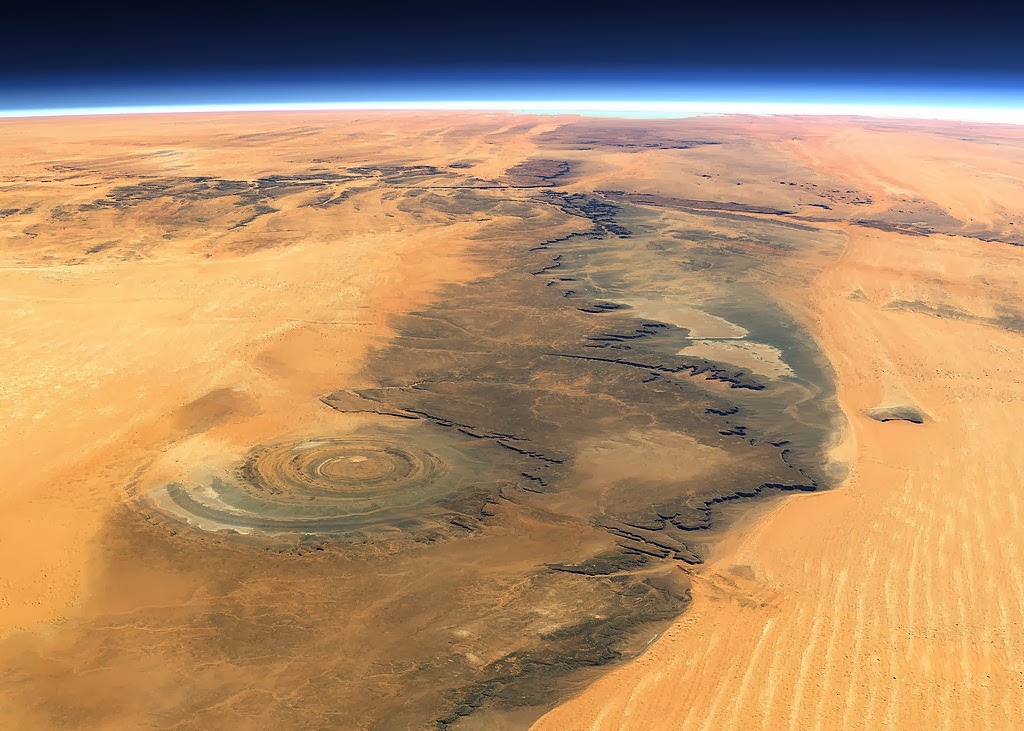
The Eye Of Sahara The Richat Structure Unbelievable Info
The Eye of Sahara. July 10, 2020 JPEG. Taken by an astronaut onboard the International Space Station (ISS), this photograph places the Richat Structure—a geologic feature in Mauritania characterized by its concentric rings—in context with the extensive dune fields that surround it. Dubbed "the Eye of Sahara," the structure has a.

Richat Structure, Mauritania, from STS58 Stock Image E620/0298 Science Photo Library
The circular structure of Richat is located in the northwestern part of the Taoudeni basin, in the central part of the Mauritanian Adrar plateaus, where it is expressed at the surface as a slightly elliptical depression, about 40 km in diameter, marked by concentric ridges of Proterozoic-Lower Paleozoic strata (O'Connor et al., 2004; Abdeina et al., 2021; Hamoud et al., 2021).

The Richat Structure aka. Eye of the Sahara, Mauritania. A deeply eroded geologic dome. (Guelb
The Richat Structure of Mauritania has captured the attention of astronauts for about as long as NASA has sent humans into orbit around Earth. This circular geologic feature is thought to be caused by an uplifted dome—geologists would classify it as a domed anticline—that has been eroded to expose the originally flat rock layers.
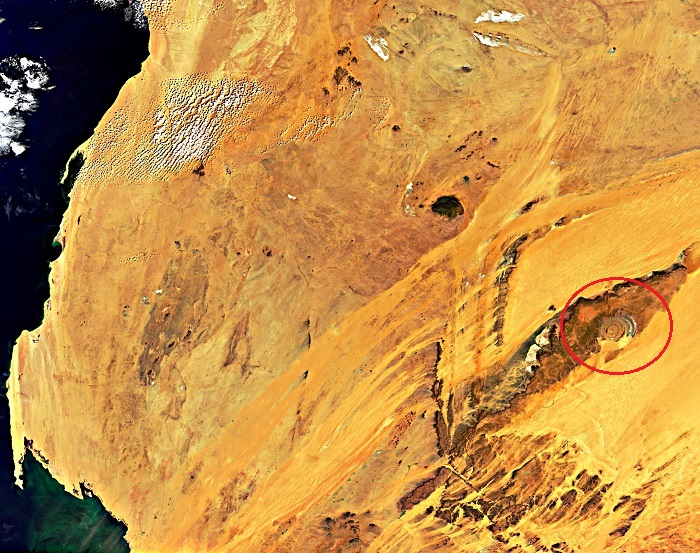
Richat Structure Alluring World
12201 Sunrise Valley Drive. Reston, VA 20192. United States. Located near the western edge of the Sahara Desert, the Eye of the Sahara is a feature that resembles a large eye when viewed from space. Also known as the Richat Structure or Guelb er Richat, the Eye is a symmetrical dome of eroded sedimentary and volcanic rock.

10 Things You Probably Didn't Know About the Richat Structure
Museo de la Naturaleza y el Hombre 2019 063.jpg 3,456 × 5,184; 12.3 MB Richat Structure in Mauritania Topographic map.jpg 1,843 × 1,876; 639 KB Richat Structure.png 2,338 × 1,653; 4.04 MB
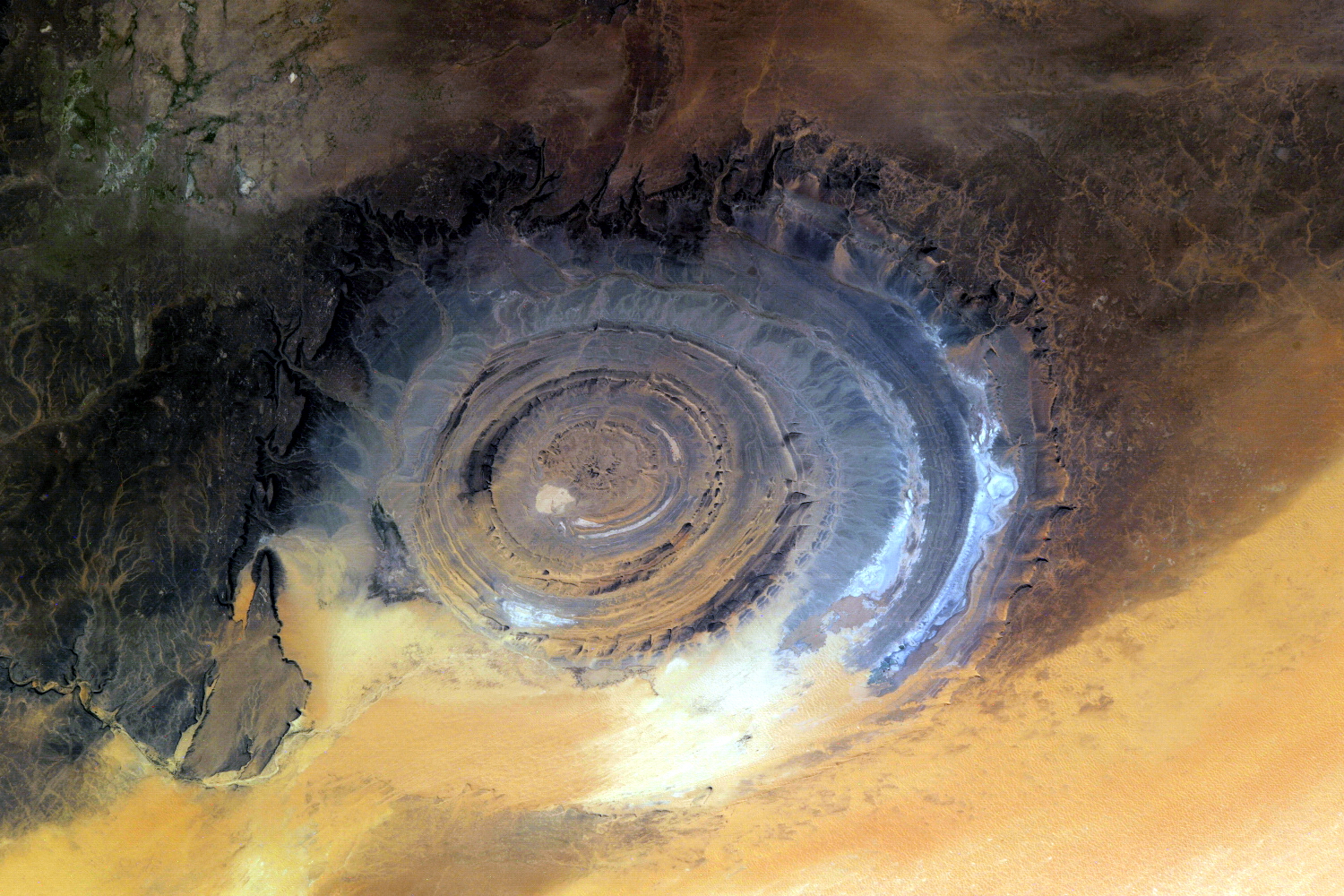
La structure de Richat La boite verte
The Richat structure, or Eye of the Sahara, is a massive, highly symmetrical, slightly elliptical geologic feature or landmark with concentric ridges measuring about 25 miles (40 km) that appears slightly sunken compared to surrounding Adrar plateau bedrock or landscapes. It is in Taoudeni basin's northwestern area of the Sahara desert's.
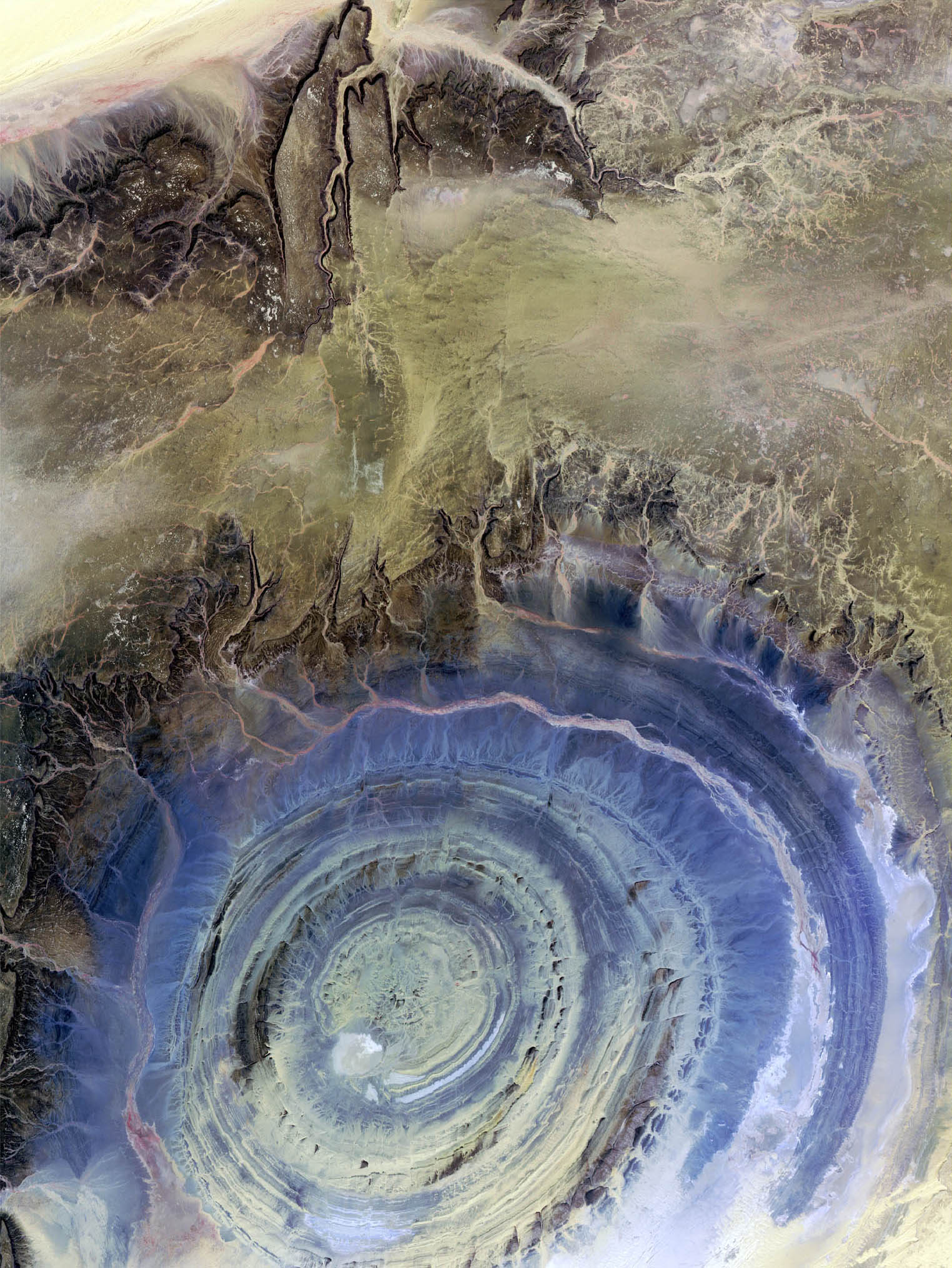
La structure de Richat La boite verte
Topographic reconstruction of the Richat structure by NASA. Credit: NASA/JPL-Caltech 1. The Richat Structure measures more than 40 kilometers in diameter and consists of concentric circles of rock and other sedimentary rocks protruding from under the sand.. 2. Many believe that it was discovered from space by the astronauts of the Gemini 4 mission. . However, the object has actually been known.

Pin on Images
The so-called Richat Structure is a geological formation in the Maur Adrar Desert in the African country of Mauritania. Although it resembles an impact crater, the Richat Structure formed when a volcanic dome hardened and gradually eroded, exposing the onion-like layers of rock. Collection: Earth as Art. Source: Landsat 7. Scale: 1.7 miles (2.8km)

Richat Structure A Geologic Wonder GeoLounge All Things Geography
iss067e286458 (Aug. 21, 2022) — The Richat Structure, also known as the "Eye of the Sahara," an eroded geological dome in the nation of Mauritania, is pictured from the International Space Station as it orbited 256 miles above northwestern Africa. The Richat Structure, also known as the "Eye of the Sahara," is pictured from the.
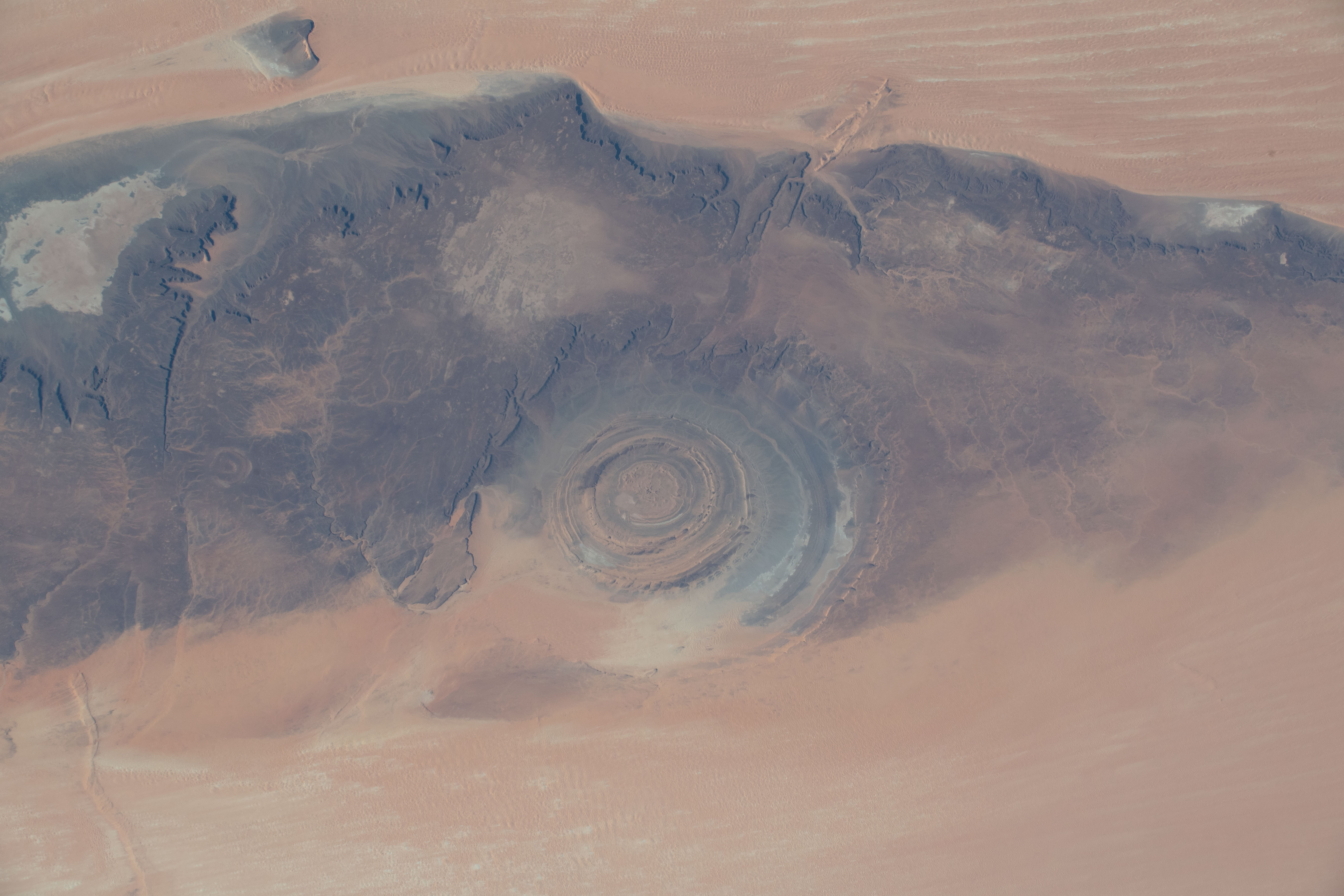
"Eye of the Sahara" the Richat Structure "in northwestern Mauritania" photographed from
NASA (public domain) In the midst of the vast, vacant Sahara desert, just outside of Ouadane, Mauritania, lies a 30-mile wide geological oddity known the Richat Structure, sometimes called the.

Richat Structure in Mauritania Image of the Day
The Richat Structure in the Sahara Desert of Mauritania is easily visible from space because it is nearly 50 kilometers across. Once thought to be an impact crater, the Richat Structure 's flat middle and lack of shock-altered rock indicates otherwise. The possibility that the Richat Structure was formed by a volcanic eruption also seems.
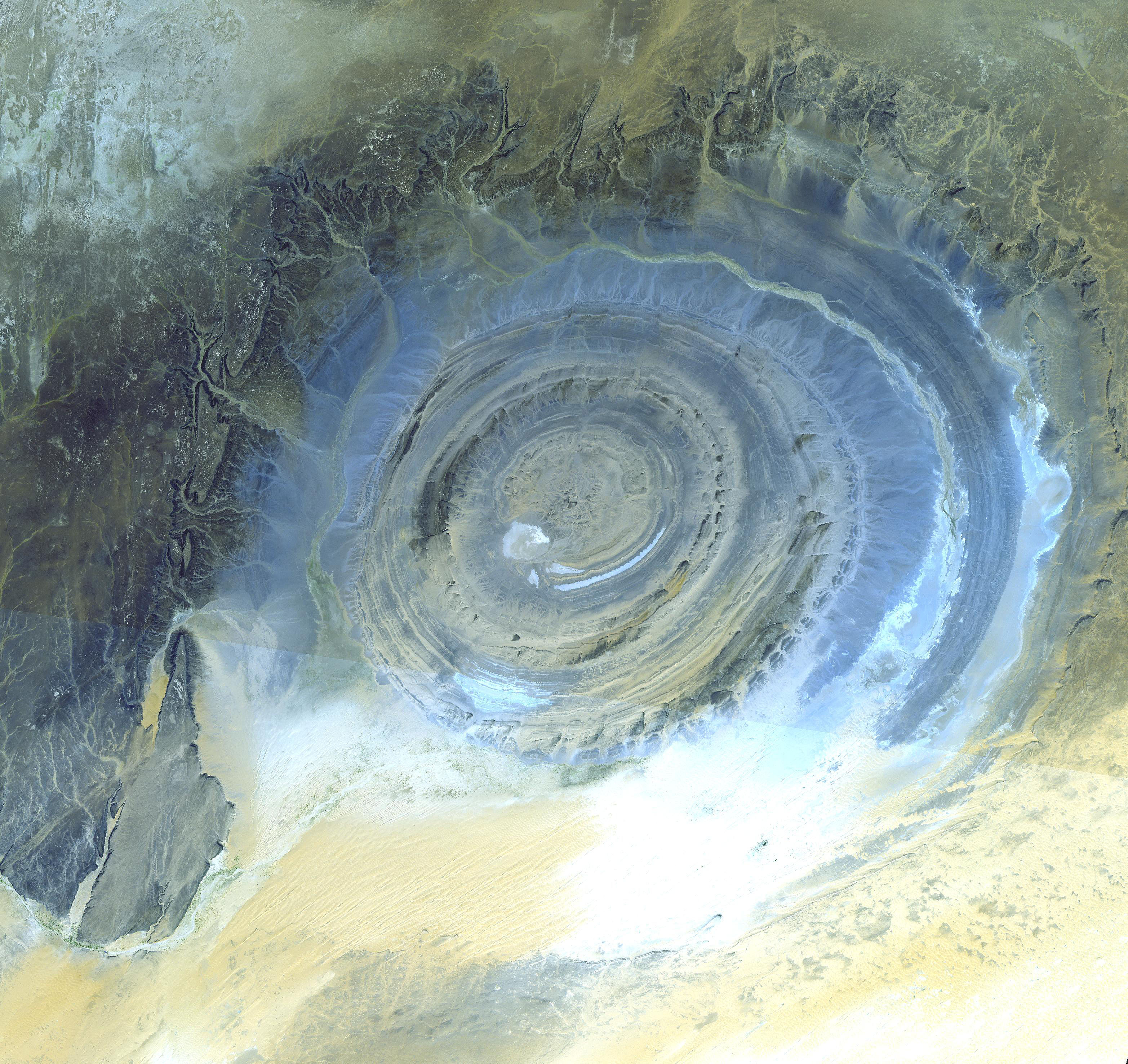
La structure de Richat
Richat Structure, Mauritania, Anaglyph, Landsat Image over SRTM Elevation. June 17, 2004. The prominent circular feature seen here, known as the Richat Structure, in the Sahara desert of Mauritania, is often noted by astronauts because it forms a conspicuous 50-kilometer-wide (30-mile-wide) bull's-eye on the otherwise rather featureless expanse.